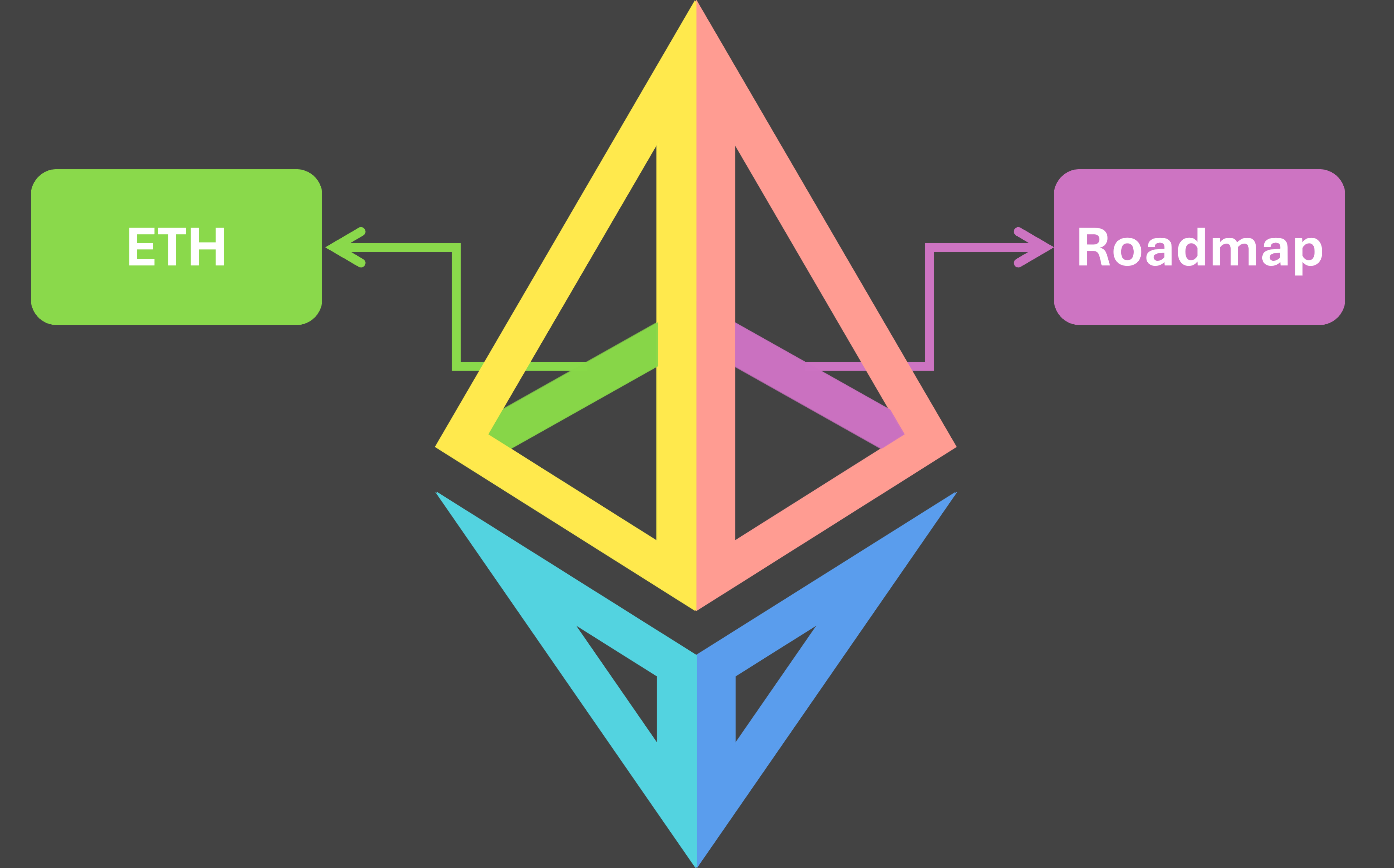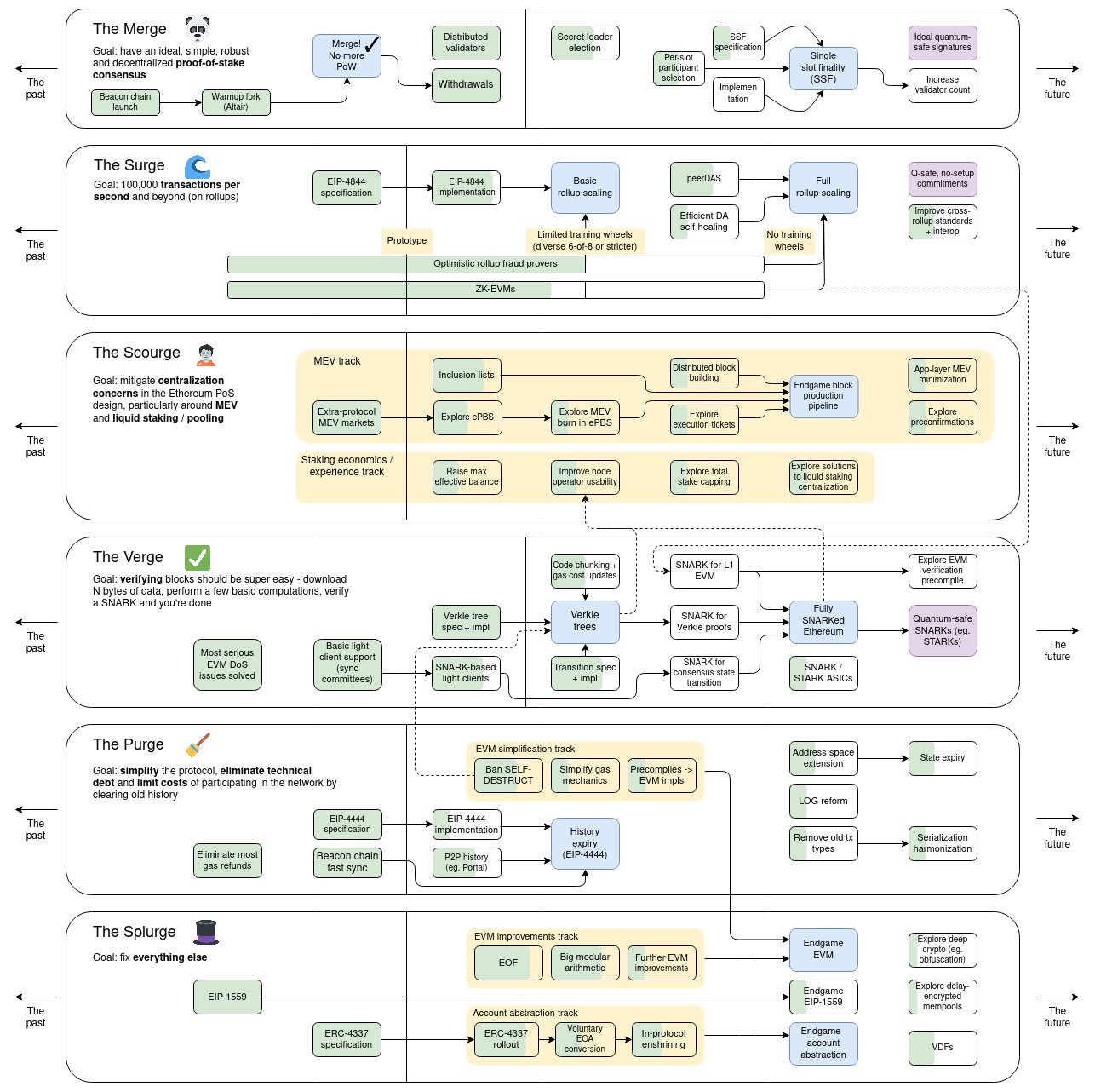
The Merge
The Surge
The Scourge
The Verge
The Purge
The Splurge
Hard Fork Timeline
Execution Layer Hard Forks
- Homestead
- DAO Fork
- Tangerine Whistle
- Spurious Dragon
- Byzantium
- Constantinople
- Berlin
- London
- Shanghai
- Cancun
- Prague
- Osaka
- Amsterdam
July 30, 2015
Ethereum's first block, also known as Frontier, occurred nearly two years after its ideation.
June - July, 2016
A large VC fund (The DAO) crowdsourced by the Ethereum community was hacked. A controversial hard fork was implemented to recover the lost funds.
2016 - 2021
Six hard forks over five years upgraded the EVM and were independent of the Beacon chain, although a few changes at the end were preparatory.
Apr 12, 2023
Enabled validator withdrawals from the Beacon Chain, completing the transition to PoS.
Mar 13, 2024
Scaled Layer2s through EIP-4844 with Blobs + other auxiliary improvements.
End of 2024
The community is still debating what exactly to include. Could go live at the end of 2024.
End of 2025
Originally part of Prague-Electra, and then Pectra 2/B. EOF + PeerDAS + More.
End of 2026
Far out, but likely Verkle Trees
Consensus Layer Hard Forks
Dec 1, 2020
This marked the beginning of Ethereum's transition to a proof-of-stake consensus mechanism, and the genesis of what is now the consensus layer.
Oct 27, 2021
The first upgrade to the Beacon Chain. It introduced several improvements, including sync committees.
Sep 6, 2022
A preparatory upgrade for the Beacon Chain that set the stage for the merge.
Sep 15, 2022
The transition from proof-of-work to proof-of-stake, triggered by reaching the Terminal Total Difficulty, and was not a hard fork.
Apr 12, 2023
Enabled validator withdrawals from the Beacon Chain, completing the transition to PoS.
Mar 13, 2024
Scaled Layer2s through EIP-4844 with Blobs + other auxiliary improvements.
End of 2024
The community is still debating what exactly to include. Could go live at the end of 2024.
End of 2025
EOF, PeerDAS, and more
End of 2026
This hardfork is tentatively being reserved for Verkle Trees.
Recent Hard Forks
Cancun-Deneb
Deployment
- Devnets
- Goerli
- Sepolia
- Holesky
- Live
Explainer Series
Part I, Part II, Part III, Part IV, Part V
Upcoming Hard Forks
Key Organizations
For decentralization and redundancy sake, Ethereum opted for a multi-client approach. Every Ethereum upgrade must be coordinated and developed in tandem with the five teams in the appropriate layer.

